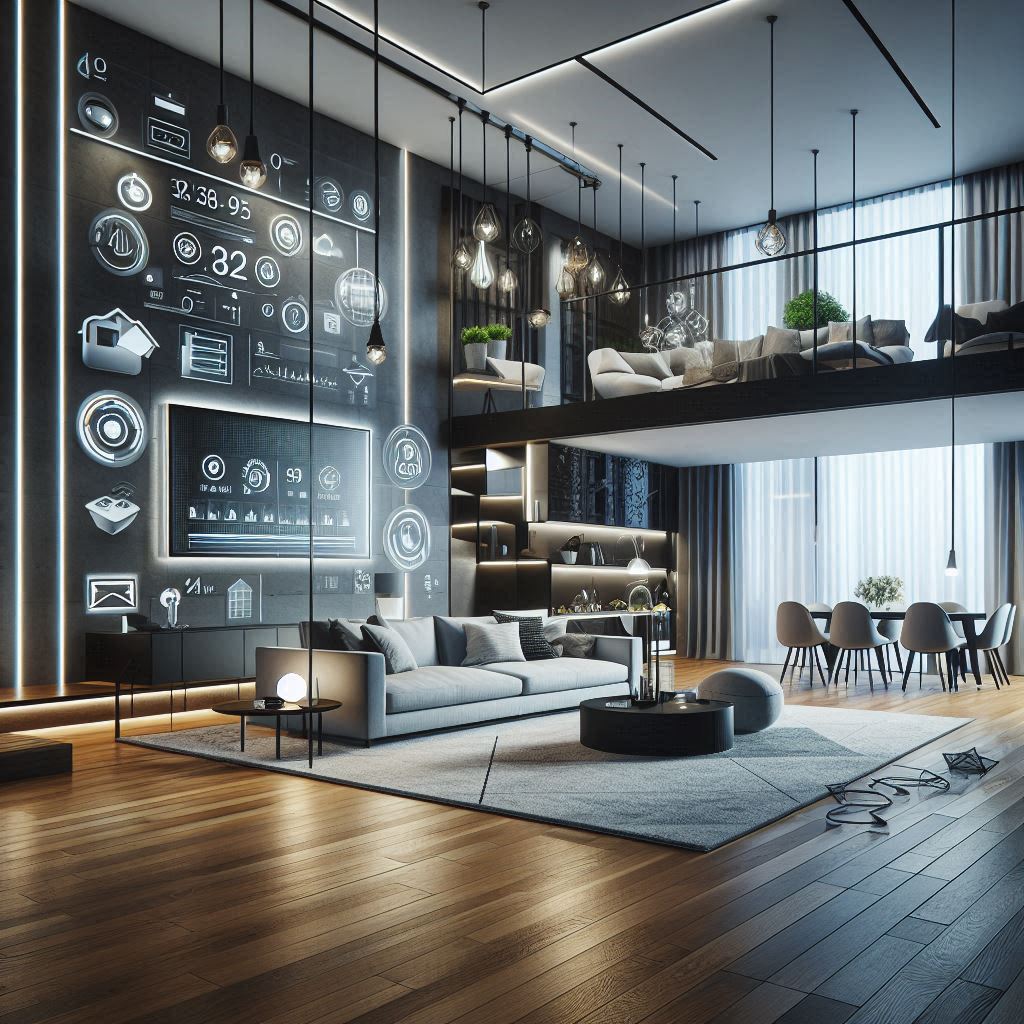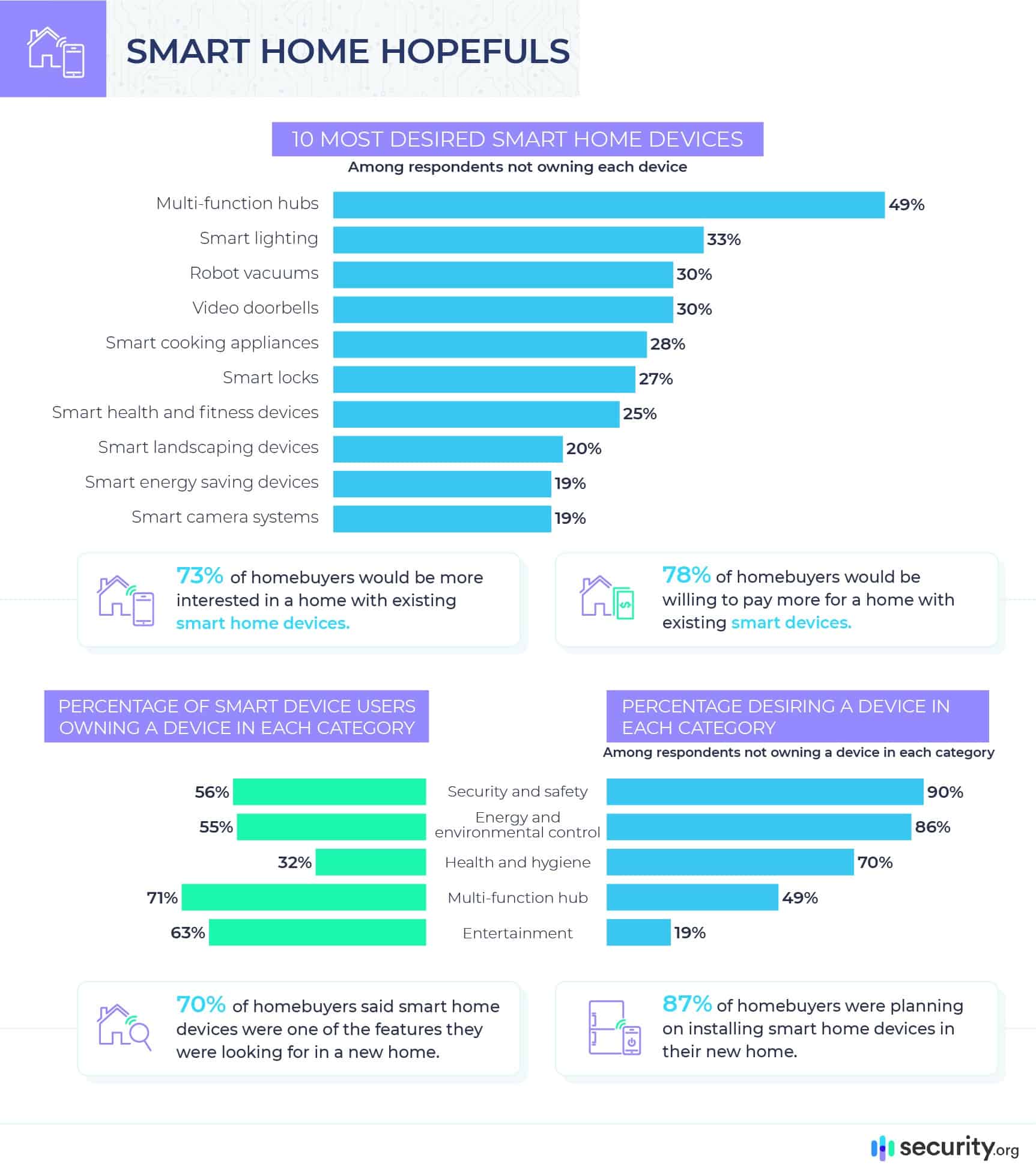7 in 10 homebuyers are looking for a smart home
Nov. 2, 2024

Smart home technology is becoming a sought-after feature in today’s real estate market. Both homebuyers and renters are actively seeking homes equipped with smart devices, aiming for added convenience while saving time and money. The previous research showed a significant increase in smart home technology usage last year, and the latest study reveals current attitudes among Americans towards these devices. They explored which smart home features people prioritize, the top benefits they seek, and how recent events have impacted smart home adoption.
Source: security.org
Key Findings
- 70% of homebuyers are looking for a smart home, and 78% are willing to pay extra for smart-enabled homes. Millennials, in particular, show a greater interest in these technologies compared to older generations.
- Homeowners primarily use smart devices for convenience and time savings, with security and safety as the next top priorities.
- Two-thirds of Americans have developed a greater interest in smart home devices due to recent events, with security-focused devices topping the list. Women, in particular, are almost twice as likely as men to want a smart alarm system.
Popular Smart Home Devices
The smart home market offers a wide range of devices, from thermostats to door locks, each with unique features and integration capabilities. Device compatibility with future technology is essential for those aiming to establish a robust and lasting smart home system. Understanding today’s popular devices is a solid starting point, as these products are more likely to receive ongoing support and upgrades. Current trends show that homebuyers are particularly interested in devices that enhance convenience and connectivity.
Smart home technology is shaping the real estate landscape, especially among Millennial buyers. In fact, Millennials were significantly more interested in 77% of the devices we surveyed, particularly in smart baby and pet accessories and multifunction hubs.

Why People Want Smarter Homes
Smart home devices aim to enhance life quality by offering benefits like convenience, safety, and automation. Many devices now integrate with platforms like If This Then That (IFTTT), allowing users to automate and customize device interactions. For instance, outdoor lights can be set to activate if a security camera detects a visitor, improving both security and energy efficiency.
Age is a factor in smart home preferences: Millennials, for example, prioritize convenience and time-saving features over security and cost savings, while safety ranks higher for women than men, with 60% of women valuing this benefit compared to 38% of men. Environmental consciousness also plays a role, as eco-friendly technology is increasingly attractive to homeowners. Over 40% of Americans have recently purchased a smart device to boost home energy efficiency.
Pandemic Impact
The COVID-19 pandemic and related social distancing measures led Americans to spend unprecedented amounts of time at home. Our study’s final segment examines how these events have influenced people’s perspectives on smart home devices.
Millennials, more than other age groups, report heightened interest in smart devices due to recent events, with factors like reduced police response and political unrest driving interest in security and multifunctional devices. Another study indicated that 1 in 4 Americans became more interested in smart home technology post-pandemic, with safety, comfort, and convenience being key motivators.
Homeowner Preferences
Currently, smart speakers and hubs with voice-activated assistants rank as the most popular smart home devices. Besides enhancing convenience and entertainment, these devices contribute to improved security and safety. We predict continued growth in smart device adoption as technological advancements make them increasingly integral to home life.
Study Data
They surveyed 1,183 people, qualifying a primary group of 518 respondents based on smart device ownership and living situations. This group included 275 men, 241 women, and 2 non-binary individuals, ranging from 18 to 77 years old, with an average age of 38. To ensure data accuracy, respondents answered an attention-check question. Some responses were edited for clarity. Self-reporting, though valuable, may be subject to memory bias, selective recollection, or misattribution.